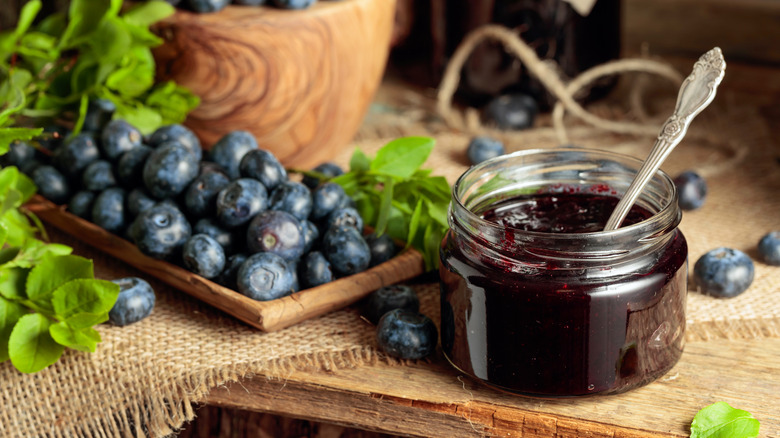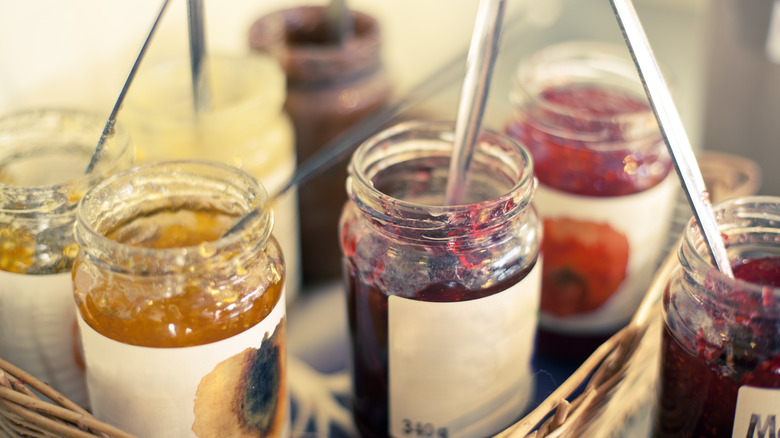How Long You Can Eat From An Open Jelly Jar Before Tossing
Raise your hand if you've gone to your parents' home and opened the fridge, and with a wave of determination decided to check the expiration dates on every little jar in there.
*Raises hand.*
Jams, hot sauce, salad dressing, ketchup ... they all line the door compartments, one older than the other. Grab a trash bag because none of these items will last as long as we think they do, especially all those multi-flavored refrigerated jars of jelly.
According to the U.S. Department of Agriculture, an opened jar of jelly will last a year in the pantry when it's stored in a cool, dark place. Once the jar is opened, it will last for six months in the refrigerator. Expiration dates can be used as a guide for freshness. But once a jar is open, it begins declining in quality, so it's best to use it up within six months.
Six months, tops
Fruit and herb jellies are made by cooking fruit juice or strained fruit puree with sugar and pectin — a natural thickening agent found in fruits. It's what makes the jelly jiggly. Note that jellies are different from jams, which have more chunks of fruit in them. Preservatives like citric acid, sodium benzoate, and potassium sorbate are commonly used in store-bought jellies to deter mold and extend shelf-life. But they can only keep jelly fresh for so long.
Before eating, always check for signs of spoilage. Look for separation, which means the water and sugar have broken apart, Alvin Lee, Ph.D., associate professor of food and nutrition at Illinois Institute of Technology, advised in an interview with Martha Stewart. There may also be yeasty off-odors, alcohol-like flavors, and patchy mold in jelly that's gone bad, Lee noted.
When jarred, jellies are processed in a water bath to ensure a tight seal. This limits the amount of oxygen contact with the jelly. When it is opened, oxygen contact begins. Living organisms like mold need oxygen and moisture to live and feed on organic matter, the jelly in this case. This begins an aerobic decomposition. Preservatives and fridge temperatures can only stave off the decomposition for a certain amount of time.
So, before you make that PB&J sandwich, be sure to check when the jelly was opened. It is a good idea to put the date of opening on jars with some masking tape and a marker.

